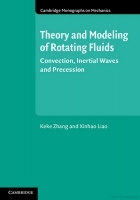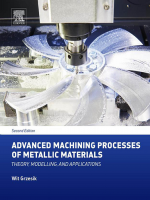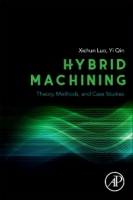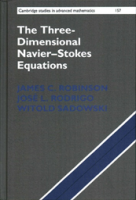Influence of the shape of reinforcing window profiles on the strength and torsional stiffness of windows
Wpływ kształtu wzmacniających profili okiennych na wytrzymałość i sztywność skrętną okien *
Author: Edward Rejman, Paweł Bałon, Bartłomiej Kiełbasa, Robert Smusz
Mechanik nr 08/09/2022 - Inżynieria materiałowa
ABSTRACT: Leading European manufacturers of profiles intended for the production of construction joinery currently use mainly PVC profiles with various configurations of external and internal shapes, allowing the production of functional products due to their intended use, shape, possibility of building them, maintaining color and maintaining low thermal transmittance coefficients of profiles. It is important to obtain high cross-sectional strengths, especially for torsion and bending. It is related to high wind loads of structures. A profile is made of a PVC with a low Young’s modulus compared to other materials, and thus it has low stiffness and strength indicators. This leads to relatively easy deformation of the joinery profiles during assembly. To avoid this unfavorable effect, the PVC profiles are reinforced with steel sections. Currently, in the industry producing PVC profiles, open steel reinforcement profiles are almost exclusively used. This solution is very disadvantageous for reasons of stiffness. However, manufacturers use such profiles primarily for technological and price reasons. Closed profiles pose many technological problems in their production and are approx. 30% more expensive compared to the corresponding open profiles. This paper presents research on the use of closed steel stiffening sections in place of open profiles. The main advantage of stiffening closed profiles is many times greater bending and torsional stiffness compared to open profiles. The theoretical and experimental studies carried out for selected cross-sections have shown that the stresses in a closed profile are several times lower than in an identical open profile, and the torsional stiffness of a closed profile is even several dozen times higher than that of an identical open profile.
KEYWORDS: torsional stiffness, bending stiffness, window open frames, window closed frames
STRESZCZENIE: Czołowi europejscy producenci profili do produkcji stolarki budowlanej stosują obecnie głównie profile PVC o różnych konfiguracjach kształtów zewnętrznych i wewnętrznych, pozwalające na produkcję wyrobów funkcjonalnych ze względu na ich przeznaczenie, kształt, możliwości konstrukcyjne, zachowanie koloru oraz utrzymanie niskich współczynników przenikania ciepła profili. Ważne jest uzyskanie wysokiej wytrzymałości przekrojowej, zwłaszcza na skręcanie i zginanie. Jest to związane z dużymi obciążeniami wiatrowymi konstrukcji. Profil wykonany z PVC o niskim module Younga w porównaniu z innymi materiałami ma niskie wskaźniki sztywności i wytrzymałości. Prowadzi to do stosunkowo łatwego odkształcenia profili okiennych podczas montażu. Aby uniknąć tego niekorzystnego efektu, profile z PVC są wzmacniane kształtownikami stalowymi. Obecnie w branży produkującej profile z PVC stosuje się niemal wyłącznie otwarte stalowe profile wzmacniające. To rozwiązanie jest bardzo niekorzystne ze względu na sztywność. Jednak producenci stosują je przede wszystkim z powodów technicznych i kosztowych. Produkcja profili zamkniętych stwarza wiele problemów i są one o ok. 30% droższe od profili otwartych. W pracy przedstawiono badania nad zastosowaniem zamkniętych stalowych kształtowników usztywniających w miejsce profili otwartych. Główną zaletą usztywniania profili zamkniętych jest ich wielokrotnie większa sztywność giętna i skrętna w porównaniu z profilami otwartymi. Badania teoretyczne i doświadczalne wybranych przekrojów wykazały, że naprężenia w profilu zamkniętym są kilkukrotnie mniejsze niż w identycznym profilu otwartym, a sztywność skrętna profilu zamkniętego jest nawet kilkadziesiąt razy większa niż profilu otwartego.
SŁOWA KLUCZOWE: sztywność skrętna, sztywność giętna, ramy okienne otwarte, ramy okienne zamknięte
BIBLIOGRAFIA / BIBLIOGRAPHY:
[1] PN-B-02011:1977 – Obciążenia w obliczeniach statycznych – Obciążenie wiatrem.
[2] PN-EN 12210:2001 – Okna i drzwi – Odporność na obciążenie wiatrem – Klasyfikacja.
[3] PN-EN 12211:2001 – Okna i drzwi – Odporność na obciążenie wiatrem – Metoda badań.
[4] PN-B-10085:/Az2:1997 – Stolarka budowlana – Okna i drzwi – Wymagania i badania.
[5] BN - 75/7150 - 03 – Okna i drzwi balkonowe drewniane – Metody badań.
[6] Instrukcja ITB 224 – Wymagania techniczno-użytkowe dla lekkich ścian osłonowych w budownictwie ogólnym.
[7] Bergstrom U., Bronnestam M., Gustafsson L., Ingvarsson L., Setter B. “Sheet Steel Handbook – Design and fabrication in high strength steel”. Borlange, Sweden: SSAB, 1996, Tunnplant, 5:12-5:27.
[8] Brzoska Z. „Statyka i stateczność konstrukcji prętowych i cienkościennych”. Warszawa: PWN, 1965.
[9] Gosowski B. „Zginanie i skręcanie cienkościennych elementów konstrukcji metalowych”. Wrocław: Oficyna Wydawnicza Politechniki Wrocławskiej, 2015.
[10] Bałon P., Świątoniowski A. “Springback compensation in cold forming process for high strength steel”. Archives of Metallurgy and Materials. Polish Academy of Sciences. Committee of Metallurgy, Institute of Metallurgy and Materials Science. 4, 60 (2015): 2471–2478, https://doi.org/ 10.1515/amm-2015-0401.
[11] Troive L., Bałon P., Świątoniowski A., Mueller T., Kiełbasa B. “Springback compensation for a vehicle’s steel body panel”. International Journal of Computer Integrated Manufacturing. 31, 2 (2018): 152–163, https://doi.org/10.1080/0951192X.2017.1379096.
DOI: https://doi.org/10.17814/mechanik.2022.8-9.12
* Artykuł recenzowany




















